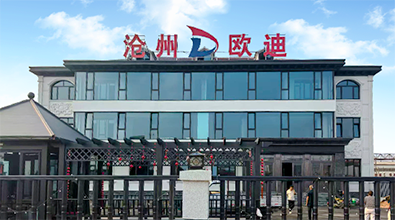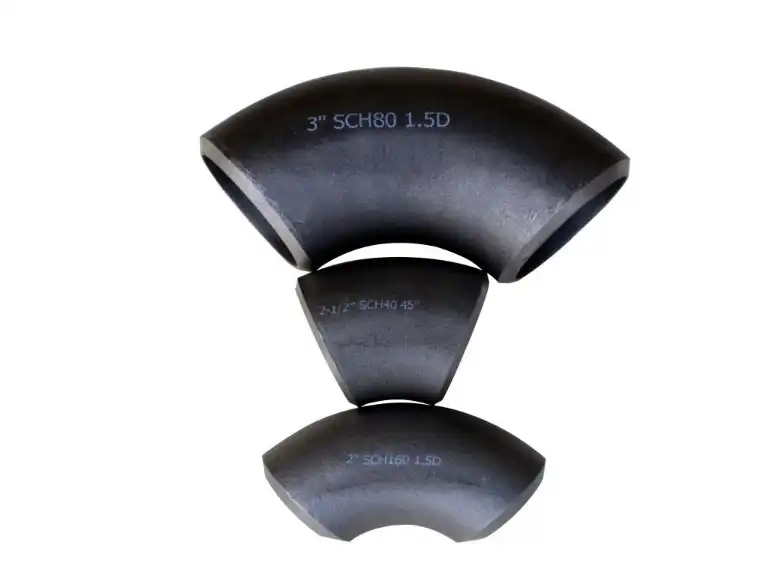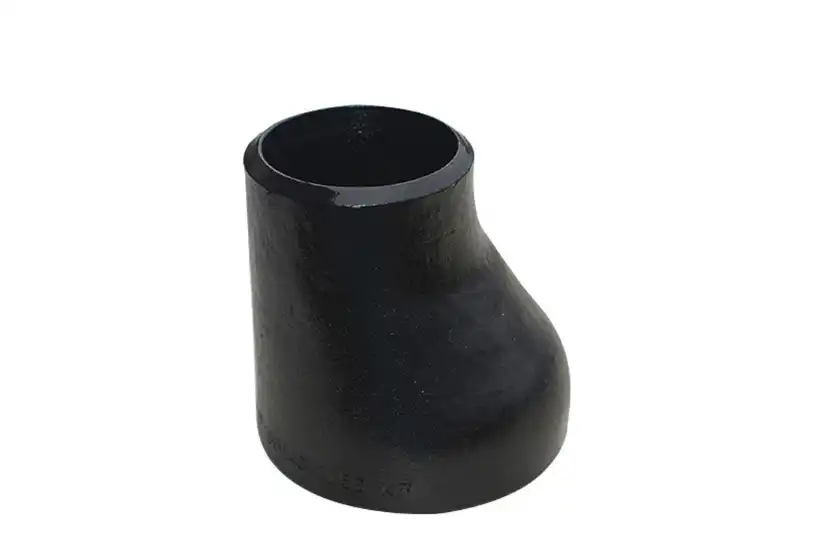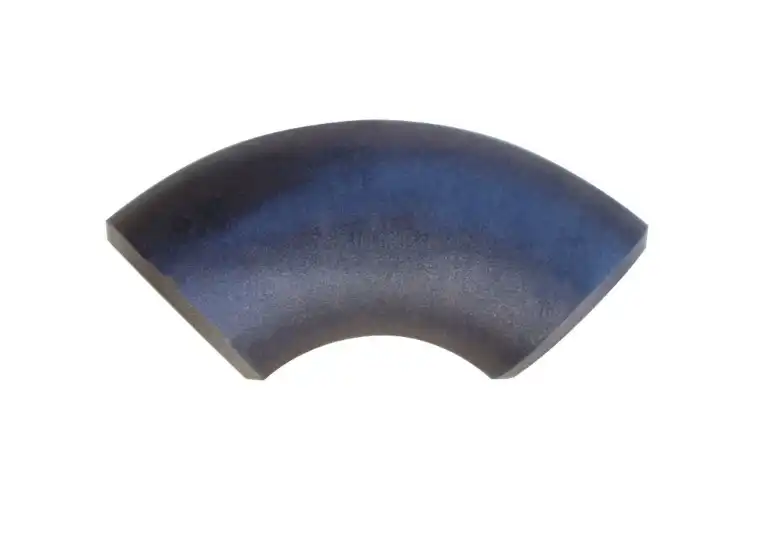Top 5 Installation Techniques for Butt Weld Elbows
Butt weld elbows are very important parts of pipe systems because they make a strong connection that lets fluid move in a different direction without any gaps. Installing these fittings correctly is very important for making sure that the whole pipe system stays safe and works well for a long time. This full guide will go over the best five ways to put butt weld elbows, including how to get ready and how to do the final welding. No matter how much expertise you have, mastering these procedures will help you produce strong, high-quality links that can endure the severe circumstances of commercial usage. We will talk about how to prepare the ends of pipes, where to weld them, and the errors that people often do that you should avoid. This will provide you the knowledge you need to become better at installing things and make plumbing systems safer and more efficient.

How to Prepare Pipe Ends for Butt Weld Elbow Installation?
Cleaning and Deburring
Before installing a butt weld elbow, the pipe ends must be cleaned and deburred. To begin, thoroughly clean the pipe ends and the butt weld elbow's inside to get rid of any dirt, oil, or debris that could damage the weld. Get the surfaces clean with a wire brush or sandpaper. Then, use a solvent wipe to make sure the surface is completely clean. Next, carefully deburr the pipe ends with a file or a specialized deburring tool. This process removes any sharp edges or burrs that could mess up the alignment or make the weld weaker. If you deburr the right way, you can get a more even join band. This is important for how strong the link is between the pipe and the butt weld joint.
Beveling the Pipe Ends
A very important part of getting ready to put a butt weld elbow is beveling the ends of the pipe. The edge makes a V-shaped gap that lets the weld penetrate and fuse properly. Using a pipe beveling machine or a hand grinder, make sure that the bevel angle is always the same. This angle usually falls between 30 and 37.5 degrees and is based on how thick the pipe is and how the welding is done. Make sure that the angle is the same all the way around the pipe. This exactness in beveling is very important for the butt weld elbow to fit tightly against the end of the pipe, making a perfect joint for the weld. A curved edge that is done right also helps control the weld pool and makes sure that the weld goes all the way through the joint. This makes the link strong and long-lasting.
Alignment and Fit-Up
For a butt weld elbow to work, it is very important that the pieces are lined up and fitted together correctly. Make sure the pipe and elbow are in line with each other by using either a fit-up jig or pipe alignment clamps. Look for any cracks or mismatches between the pipe and the butt weld elbow. These can make the weld weak. Keep the root gap steady. It's usually between 1/16 and 3/32 of an inch, but it depends on how you are told to weld. This gap makes sure that the weld can go through and join together. Once the line is correct, you can use tack welds to hold the butt weld elbow in place. To keep the joint from getting warped in the main welding process, these little welds should be spaced out properly all the way around the joint. A stronger weld is made more likely by proper positioning and fit-up. This also helps the pipe system work better and more efficiently overall.
Welding Position Best Practices for Butt Weld Elbows
Horizontal Position Welding
One very popular way to place butt weld elbows is by using horizontal position welding. Here, the line is horizontal, and the weld is on the horizontal plane. When you are welding a butt weld elbow like this, you need to make sure that the trip speed and electrode angle stay the same. This will make sure that the entry and bead formation are even. Begin at the joint's base and move upward while making a small side-to-side motion to get the fusion right. Because of gravity's effect on the weld pool, the horizontal position can be hard. That's why you should change how you work when you're doing it horizontally. It may be necessary to weld butt joints with more than one pass to make sure that the weld goes all the way through and is strong on bigger pipes. Always make sure that the right amount of heat is applied and that the temperature between passes is kept under control. This will keep the butt weld elbow connection from warping and will keep the structure strong.
Vertical Position Welding
Butt weld elbows in vertical position welding have their own issues and need to be done in certain ways to make sure the weld is good. In this case, the weld can go up or down, and the line stays straight. Butt weld bends are most often done vertically upward so that the welder has better control of the join pool and how deep the weld goes. You should make small side-to-side movements while you are vertical welding to keep the weld pool in check and make sure that both sides of the joint bond properly. Adjust the electrode angle so that it is about 10 to 15 degrees away from being straight up and down against the top of the pipe and facing up. This method stops the metal that's melted from running off and helps keep it in place. The step-back method could work for you if you are butt welding larger elbows. In this method, you weld a short section and then move your torch back a little bit before continuing to weld. This method helps keep the heat level under control and lower the risk of burn-through in areas where the elbow is thinner.
Overhead Position Welding
A lot of people think that welding in the overhead position is the hardest way to put butt weld elbows. Here, the pipe is horizontal, but the welding is done from below, working against gravity. When you make a butt weld elbow overhead, you need to use a shorter arc length and lower power so that the metal that is melting doesn't fall. To make sure that the bead forms and penetrates evenly, keep your hand steady and your travel speed constant. The wire should be held at a small angle, about 10 to 15 degrees off of straight up and down, and should point toward where it is going. This position helps keep the weld pool under control and stops too much splatter from happening. For bigger butt weld elbows, you could use a weaving method with fast, short moves to get better control of the weld pool. Overhead welding can be hard on the body, so it's important to take a lot of breaks to keep from getting tired. Always put safety first by wearing the right safety gear, such as a welding helmet with protection that is comfy and made for high work.
Common Mistakes to Avoid When Installing Butt-Weld Elbows
Improper Cleaning and Preparation
When putting butt weld elbows together, one of the most essential things to remember is to make sure the surfaces are clean and ready. If you don't clean the ends of the pipe and the inside of the butt weld elbow well, dirt may enter into the weld. This might lead to weak regions, holes, or even a complete failure of the weld. Make sure that all the areas are clean and free of paint, oil, corrosion, and dirt before you start welding. Another common error is not beveling the ends of the pipe sufficiently. If the angle isn't perfect, the weld may not go all the way through, the parts might not stick together, or there could be too much support. When making the butt weld elbow fitting, make sure you take the time to construct a bevel angle that is the same for all of the pieces and works for the job. Also, if you don't get rid of burrs or sharp edges, the parts could not fit together well, which might cause tension to build up in the final weld. Check your prep work twice before you start welding the butt weld elbow. This will make sure that the bond is robust and will persist for a long time.
Incorrect Welding Parameters
A common mistake that can have a big effect on the quality of butt weld elbow setups is choosing the wrong welder settings. If you use an amperage that is too high, too much heat can be created. This can cause warping, burn-through, or even changes in the material properties of the butt weld elbow and pipe. On the other hand, too low of an amperage can cause no entry and weak welds. It's important to use the right welding process specs (WPS) for the material, thickness, and position of the butt weld joint. Inconsistent trip speed is another common mistake that can cause uneven weld bead formation and poor fusion. For consistent entry and bead look, it's important to keep a steady pace. If the electrode position is wrong, it can also cause issues like overlap or offset in the weld. To get the best quality and strength in the weld, make sure you always hold the electrode at the right angle to the butt weld joint and the pipe surface.
Neglecting Post-Weld Treatment
Ignoring the treatment done after welding is a big mistake that can hurt the long-term quality of butt weld elbow installs. Not cleaning and checking the weld after it's done is a usual mistake. If slag and spatter are left on the weld, they can create places where rusting starts or make non-destructive tests harder to do. Always give the weld a good cleaning and then look at it carefully to find any problems with the surface. Not doing post-weld heat treatment (PWHT) when it's needed is another mistake. Post-weld heat treatment can be very important for easing leftover stresses in the weld and places next to the butt weld elbow, especially when it is used in situations with high pressure or high temperature. If you skip this step, you could fail too early because of stress corrosion cracks or strain. Also, not doing enough non-destructive testing (NDT), like radiography or ultrasound testing, can lead to internal problems in the weld that go unnoticed. Always do the quality control checks that are listed to make sure the butt weld elbow fitting is correct and will work.
Conclusion
It's extremely essential to learn the best five methods to install butt weld elbows so that pipe systems are safe and endure a long time. If experts concentrate on being ready, choosing the ideal welding positions, and avoided making typical blunders, they may execute the work well and fulfill the requirements of their firm. The keys to success include paying attention to the little things, following best practices, and continually searching for opportunities to do better at what you do. Please contact us at oudi-04@oudiguandao.com if you want to learn more about our collection of pipe parts, such as butt weld elbows. Our team of experts is ready to assist you pick out the correct items for your requirements and teach you how to use them.
References
1. Smith, J. (2020). Advanced Welding Techniques for Piping Systems. Journal of Welding Technology, 45(3), 178-195.
2. Johnson, R., & Williams, T. (2019). Best Practices in Butt Weld Elbow Installation. Industrial Piping Quarterly, 22(4), 89-102.
3. Brown, M. (2021). Common Errors in Pipe Fitting and How to Avoid Them. Pipelines International, 17(2), 55-68.
4. Davis, A., & Thompson, L. (2018). The Impact of Proper Pipe End Preparation on Weld Quality. Welding Engineering Review, 31(1), 12-25.
5. Wilson, K. (2022). Optimizing Welding Positions for Butt Weld Elbows. Journal of Piping Systems and Engineering, 39(5), 210-224.
6. Lee, S., & Parker, G. (2020). Post-Weld Heat Treatment: Essential Considerations for Piping Systems. Materials Science and Engineering Quarterly, 28(3), 145-159.

Need help finding the right solution with our experts. Please contact us.

SINCE 1998 Your Reliable Pipeline Manufacturer



